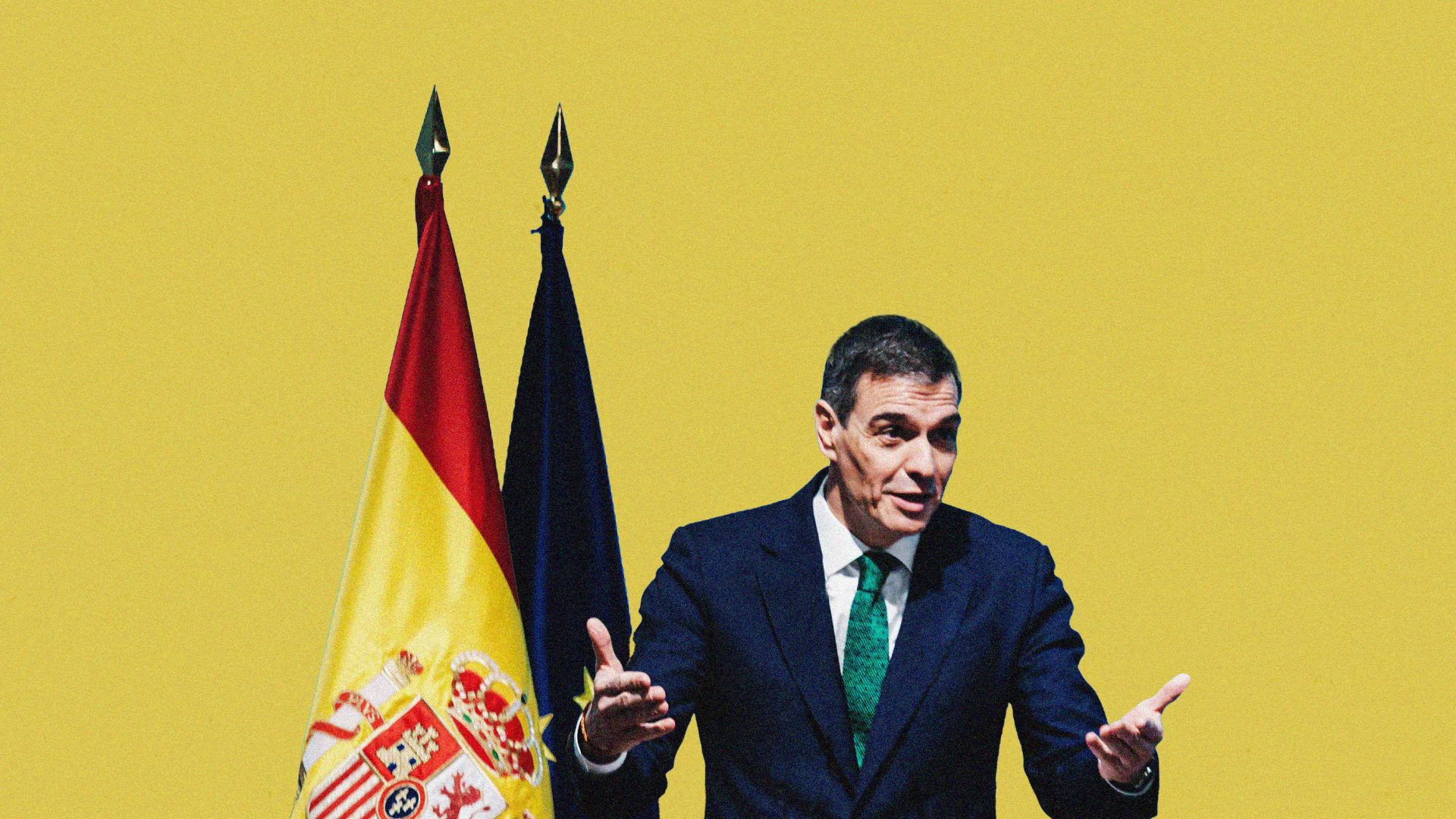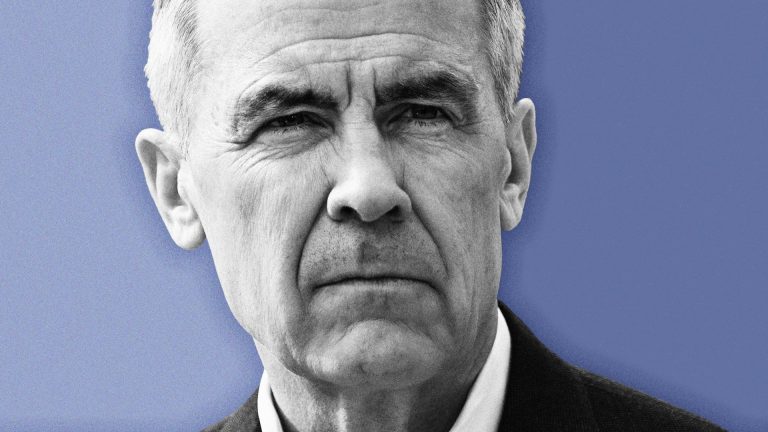“Trump has decided to return to 19th-century protectionism,” said the Spanish prime minister the day after the American president announced 20% tariffs for the EU. Pedro Sánchez criticised the “unprecedented” US tariffs and put forward a €14.1bn package to support the economy.
Like other European countries, Spain fears the consequences of these tariffs, as the country is still fragile, even though it’s doing better economically. Last year was a period of success for the Spanish economy. Driven by a strong labour market, “revenge tourism”, and high levels of immigration, Spain became the EU locomotive.
According to the Bank of Spain, annual GDP growth this year is expected to be above 3%, well above the EU average of 0.9% expected by the European Commission. After compiling data on GDP, stock market performance, the inflation curve, the unemployment rate, and the public deficit, Spain appeared as the most prosperous economy in the OECD in 2024. It was chosen as the best-performing country in 2024 by The Economist.
This is a stark contrast to the economic crisis that Spain experienced after the crash of 2008. At the time, Spain was in a brutal combination of a burst real estate bubble, a currency crisis, soaring unemployment and large numbers of young people leaving the country in search of a better life elsewhere.
Now, the EU’s traditional powerhouses of France and Germany are growing at a much slower pace, and the worry now, especially in light of Trump’s tariffs, is that a recession is looming.
“Europe has faced an energy shock, mainly due to disconnection from Russian gas, and a trade shock because of the reconfiguration of globalisation,” explained Raymond Torres, an economist at the Spanish think tank Funcas. “However, for Spain this brings a lot of advantages. The country has invested over the past 10 years in renewable energy, which allows electricity prices to be much lower than the EU average, and the dependence on trade with third countries is less than in many other European countries.”
Unlike its neighbours, who are closing their borders and toughening their immigration policy, Spain is counting on immigrants to keep its economy going. The country intends to legalise about 300,000 undocumented migrants per year up until 2027, to sustain its economic growth. “More or less 84% of the increase of the population in the past two years is due to immigrants, and 40% of the total employment created is also for this labour. It’s an important driving force for growth,” explained Torres.
Spain is reaping the rewards of drastic remedies that were imposed during the austerity years. Unemployment hit a 17-year low after more than 500,000 jobs were added last year.
“Spain is a better country today than it was six years ago, and in 2027 it will be even better than it is today,” said the Spanish prime minister at the end of the year. Despite this, he is currently struggling to govern with his minority government and doing poorly in opinion polls.
Spain continues to focus strongly on tourism as an economic driver. Helped by “revenge tourism” – following the end of restrictions linked to the Covid-19 pandemic – the country is experiencing a boom.
More than 88 million international tourists, mostly from the UK, France, and Germany, were recorded in the first 11 months of 2024. It’s a record figure, two million more than the total recorded in 2023.
“Tourism has rebounded very quickly after the pandemic, beyond expectations,” said Torres. “But the dependency on tourism has increased with this boom. Now it represents almost 13% of GDP. It’s very significant, particularly in some regions like the Balearic Islands or the Canaries.”
The country is still enjoying great competitiveness compared with the major European economies, in particular with lower wages. Non-tourism services, like engineering, architecture, telecommunications, and activities related to technology, are also doing well. “The crisis affected industries more than services. The demand for services is growing faster than average,” explained Torres.
The healthy economy is also attracting many international investors. In December, the carmaker Stellantis and the Chinese battery maker CATL announced they would build a $4bn mega battery plant in Zaragoza.
But despite the fact that Spain’s macroeconomic situation has improved, some Spaniards are still not feeling the positive effects. Many are struggling to make ends meet because of high inflation and low wages. Housing prices have rocketed, to the point where it has become unaffordable for some locals to remain in big cities like Madrid or Barcelona.
“Honestly, in my daily life I don’t really see any concrete changes,” said Angela, 27, on the streets of Madrid. “Despite my job in marketing, I have to rent a room in a shared flat of four people outside the city centre. Even doing this, watching my grocery budget and reducing going out, I’m barely getting by. I have the impression that the improvement is mainly for rich people.”
The housing crisis continues to be a major issue. With a shortfall of 600,000 homes, according to the Bank of Spain, and a social housing stock that is very low, many young Spaniards are forced to stay with their parents much longer than in other countries. The situation has been exacerbated by foreign investors and mass tourism. Housing has now become one of the most important factors in poverty, according to a report from the Spanish Foessa Foundation. The report underlines the fact that 7% of the population live in spaces of less than 15 sq metres per person.
Poverty is pushing more and more people towards food banks. Mila Benito Tapia, from the Food Bank of Madrid, said: “Demand is still very high, and we are seeing more young people, especially young middle-class couples with children and also single-parent households.”
The NGO served more than 130,000 beneficiaries last year with approximately 22m kg of food. “The problem right now in Madrid is the increase in the price of housing. Even if they have work, they often do not make ends meet. The housing problem is hitting quite hard.”
Four million people live in severe poverty in Spain, and another 9.5 million are at risk, according to a recent survey by Foessa. “The disconnect between the macroeconomic situation and people’s perception is remarkable,” said Torres. “It can be explained by the growth model of Spain, which is based on incorporating more people in the economy and not improving productivity. If you grow by incorporating more people, it means that the average real income is not growing so much.”
Spanish productivity is increasingly lower than European productivity. The excessive weight of low value-added activities, such as transport or hotels and restaurants, contributes to widening the gap. The European Commission has already warned in vain that this is an “endemic problem” in the Spanish economy.
Inflation is another big issue. At 2.8% in December, it remains stubbornly above the European Central Bank’s 2% goal. Added to that, unemployment remains very high, especially among young people. At more than 11%, it’s the highest among the 27 EU members.
“It’s much easier for young people to get a job because of the very dynamic market at the moment. Some people who emigrated 10 years ago can return to Spain, but we still have a problem with wages. They are not attractive enough, especially for young educated people, who can get a much higher wage in the other EU countries,” explained Torres.
The dynamism of the Spanish economy has created waves of anti-tourism protests, particularly in Barcelona and the Canary Islands. Residents have been protesting for months against excess tourism, saying that they can no longer find accommodation in tourist hotspots.
Like other countries where mass tourism has an important place in the economy, and many Spaniards depend on it, the risks are very real if the trend changes. “We saw the impact of this during the pandemic, when tourism disappeared. Spain had a big shock at the time. It’s a policy issue to not be too dependent on tourism,” Torres added.
Added to that is climate change. Spain is one of the countries most at risk, and natural disasters, accentuated by global warming, are intensifying, as seen in the deadly floods in Valencia last year. The increase in the number of heatwave days also threatens tourism, which is being pushed out of the summer period and out of traditional areas into new ones, such as northern Spain.
Finally, the political situation is another factor of instability. Spain has not had a budget since 2023 due to a lack of agreement on economic priorities between the left wing minority government of Pedro Sánchez and the opposition. Meanwhile, the size of Spain’s external debt reached 104.4% of GDP last September. Experts estimated that the current government would be unable to pass the further reforms needed to boost long-term growth. “I think Spain is not taking sufficient advantage of this high-growth period in order to reduce some of the structural balances or deficits because of the fractured political scenario,” said Torres.
Spain hopes that this high-growth trend will continue. The economy minister, Carlos Cuerpo, anticipated 2.4% growth this year and 2.2% in 2026. But with political divisions growing, it remains to be seen whether an election could disrupt those forecasts.









